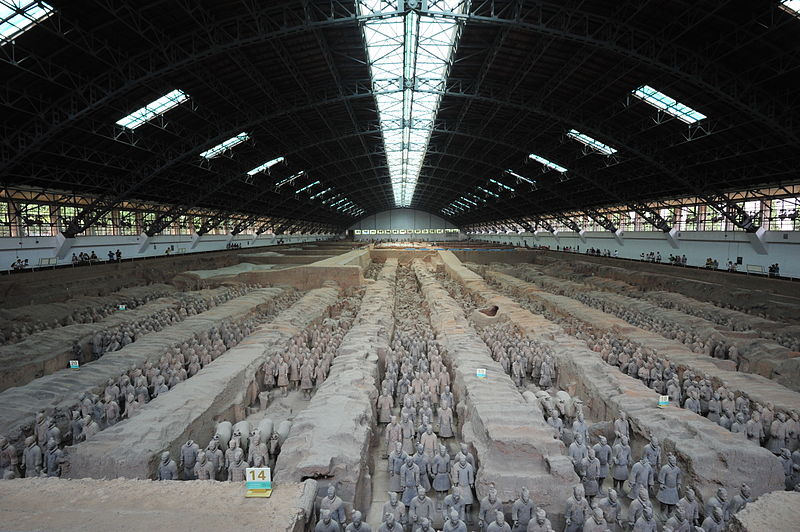
The Terracotta Army or the “Terra Cotta Warriors and Horses”, is a collection of terracotta sculptures depicting the armies of Qin Shi Huang, the first Emperor of China. It is a form of funerary art buried with the emperor in 210–209 BC and whose purpose was to protect the emperor in his afterlife, and to make sure that he had people to rule over.
The figures, dating from 3rd century BC, were discovered in 1974 by some local farmers in Lintong District, Xi’an, Shaanxi province, near the Mausoleum of the First Qin Emperor (Chinese: 秦始皇陵; pinyin: Qín Shǐhuáng Ling).
The figures vary in height according to their roles, with the tallest being the generals. The figures include warriors, chariots and horses. Current estimates are that in the three pits containing the Terracotta Army there were over 8,000 soldiers, 130 chariots with 520 horses and 150 cavalry horses, the majority of which are still buried in the pits.[1] Other terracotta non-military figures were also found in other pits and they include officials, acrobats, strongmen and musicians.
The Terracotta Army was discovered in the spring of 1974 to the east of Xi’an in Shaanxi province by a group of farmers when they were digging a water well around 1 mile (1.6 km) east of the Qin emperor’s tomb mound at Mount Li (Lishan),[2][3] a region riddled with underground springs and watercourses. For centuries, there had been occasional reports of pieces of terracotta figures and fragments of the Qin necropolis – roofing tiles, bricks, and chunks of masonry – having been dug up in the area.[4] This most recent discovery prompted Chinese archaeologists to investigate, and they unearthed the largest pottery figurine group ever found in China.
